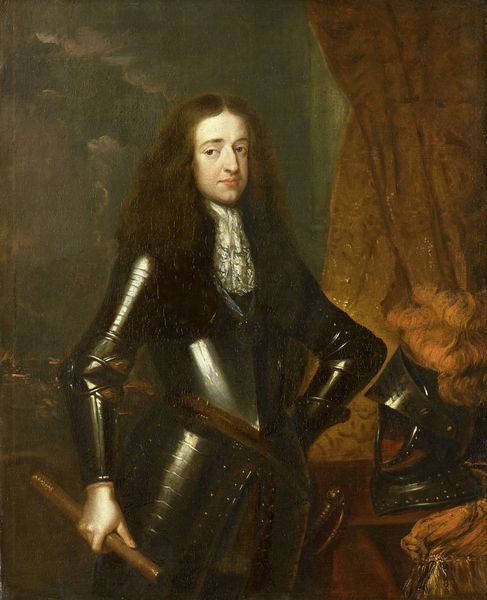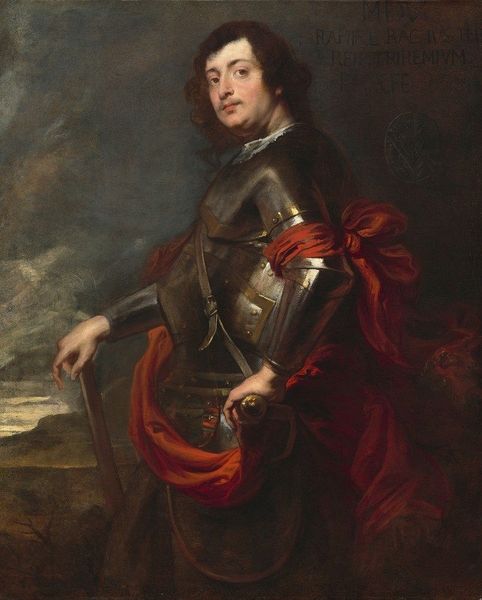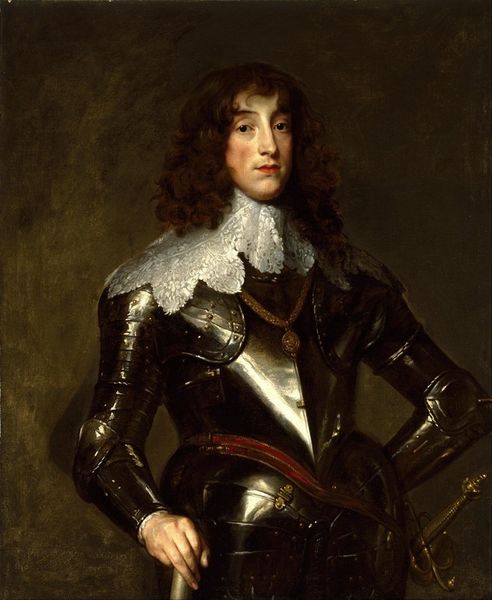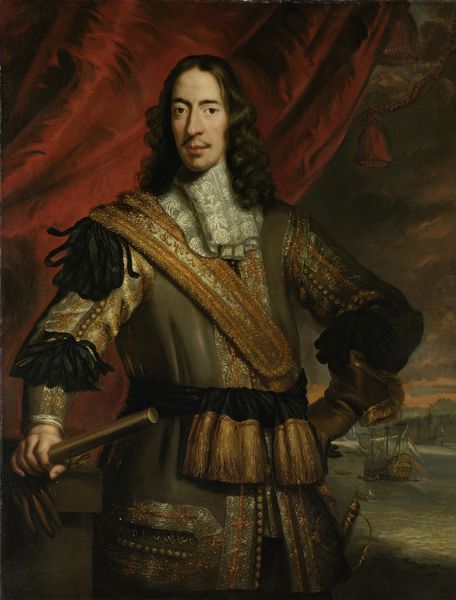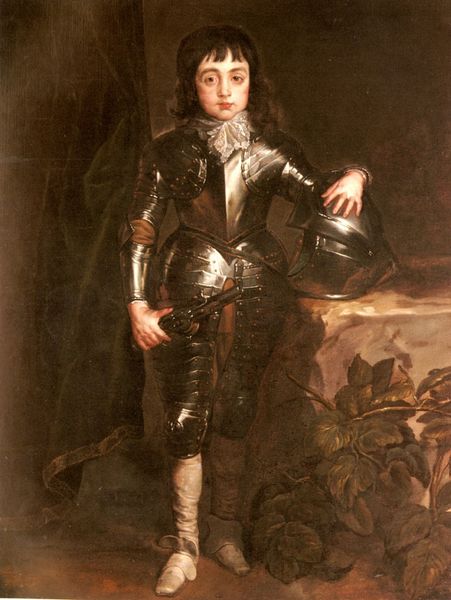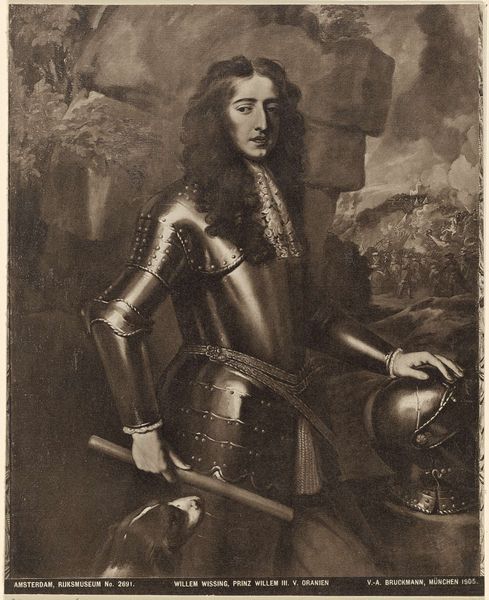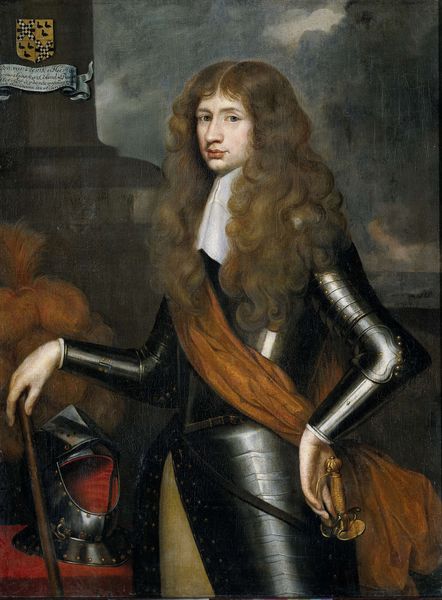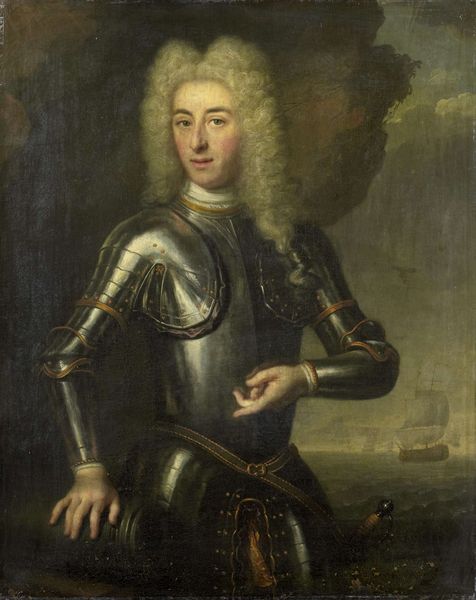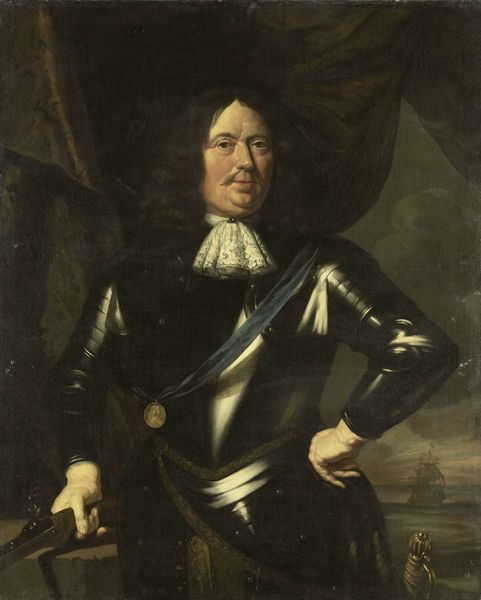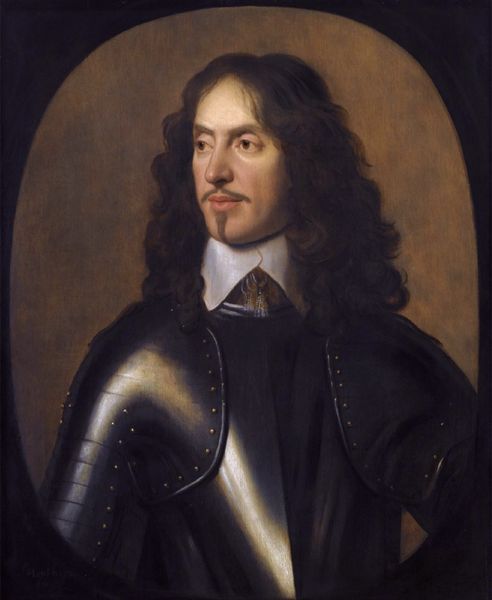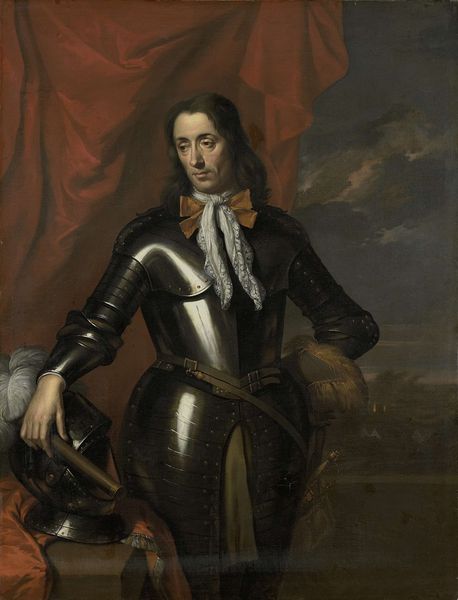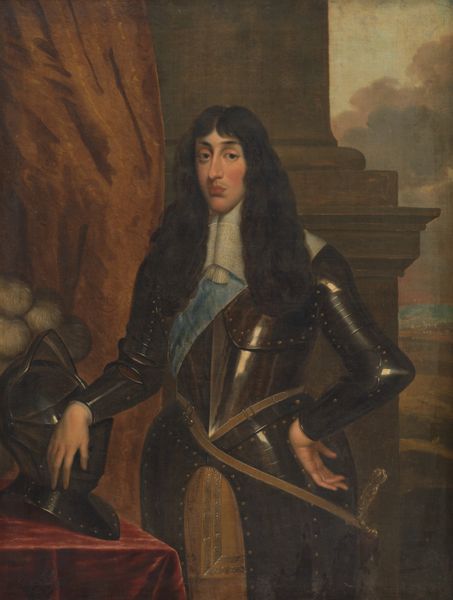
oil-paint
#
portrait
#
baroque
#
oil-paint
#
landscape
#
history-painting
Dimensions: height 113 cm, width 89 cm
Copyright: Rijks Museum: Open Domain
Curator: Here we have "Portrait of William III (1650-1702), Prince of Orange" painted between 1680 and 1710. Editor: The steely light and armor lend him an almost intimidating presence. Is that a battle raging behind him? Curator: Yes, this portrait by Willem Wissing not only showcases William as a regal figure but also emphasizes his role as a military leader during a tumultuous period in European history. His Protestant faith played a crucial role in the events that brought him to power. Editor: Notice the rendering of the metal surfaces. The play of light is expertly captured. The eye moves seamlessly over the polished textures—creating a rich sensory experience. The gold on the tassel complements it, don't you agree? Curator: Absolutely. Think of the context here: William's ascent was entwined with the narrative of religious and political conflict of the time. The painting subtly projects an image of resolute Protestant leadership amidst growing imperial competition, using his posture, his armor, and even the subtle tensions in his gaze. Editor: The composition really directs one’s attention— the placement of the helmet echoes his own head while the muted earth-tones give way to small splashes of light. I almost missed the landscape altogether. Curator: Landscape and portraiture converged in Wissing's strategic construction of the King’s image. He created an idealized view meant to underscore authority—particularly given the anxieties about succession and stability circulating within England at the time. Editor: Interesting. Curator: Looking at William as a man situated within a grand sociopolitical environment transforms our perspective. We can recognize the narratives—power, religion, identity—and these considerations re-frame and deepen our perception of visual representation and its purposes. Editor: I still find myself captivated by the brushwork. The subtle gradients communicate so much. What more need be said?
Comments
No comments
Be the first to comment and join the conversation on the ultimate creative platform.
